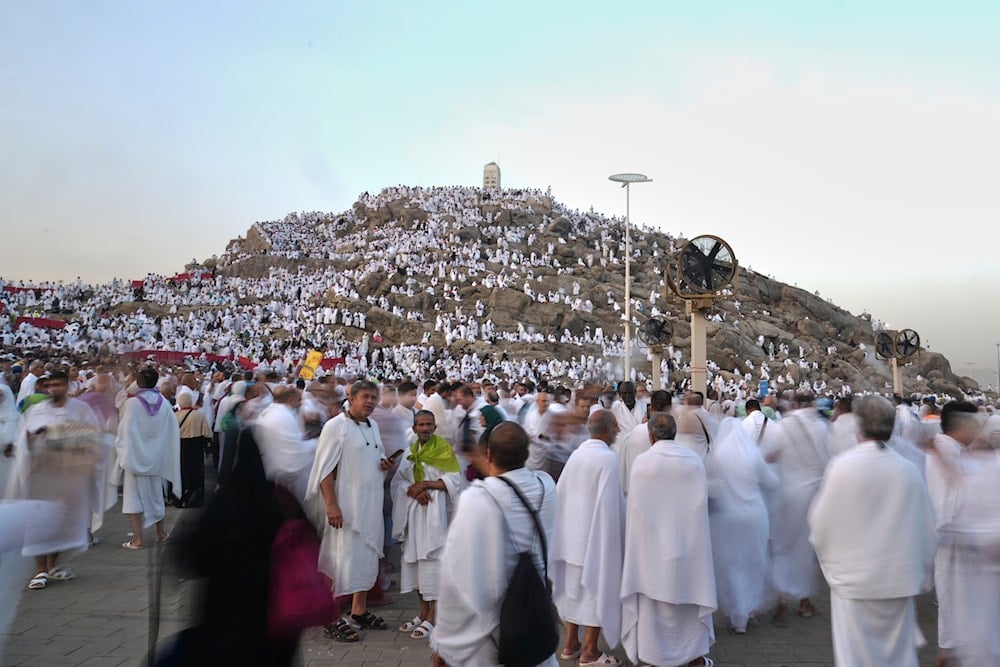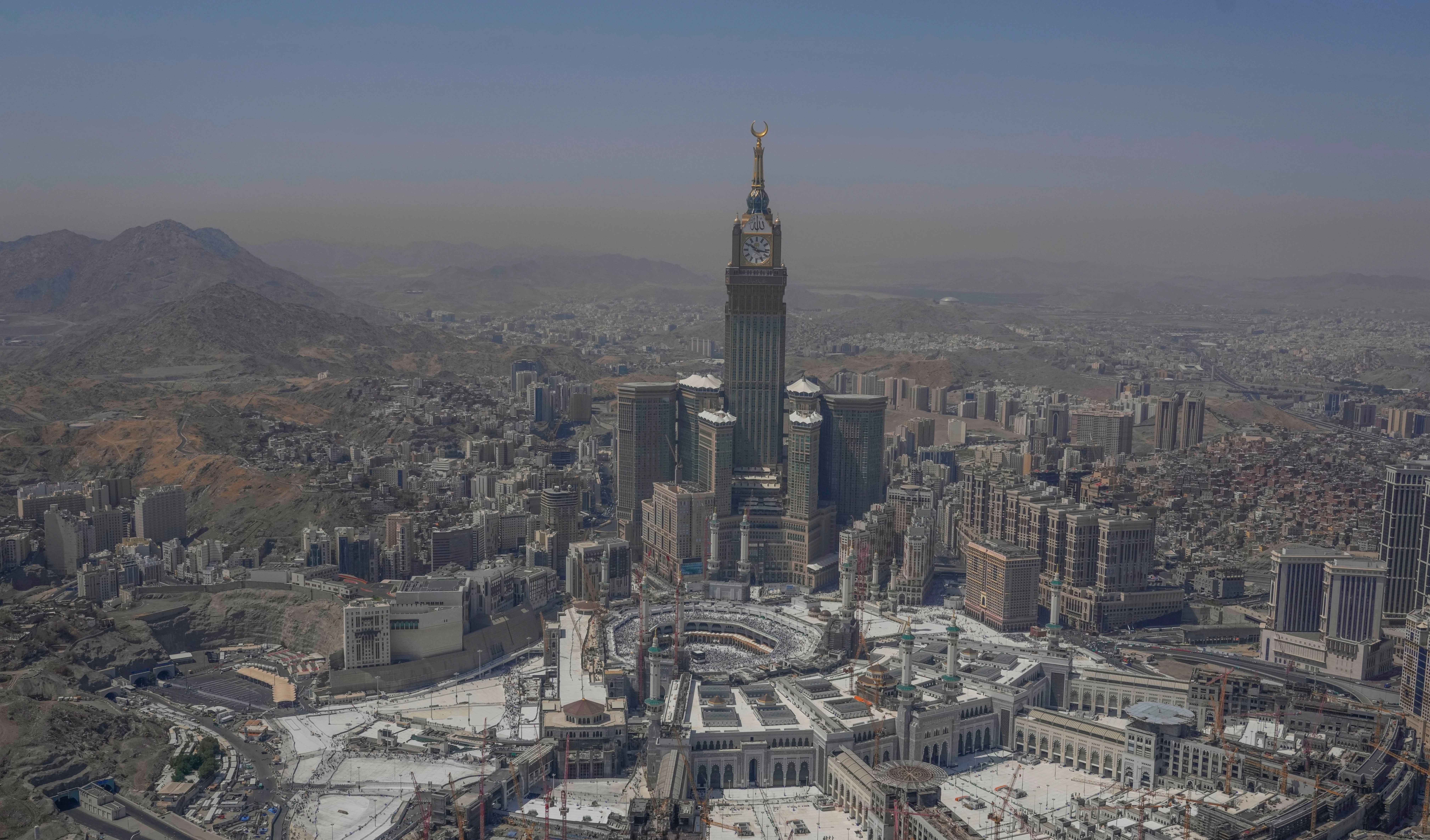Pilgrims perform the final Hajj ritual in Mina Valley on Eid al-Adha
On the first day of Eid al-Adha, pilgrims perform the final ritual of the Hajj season, "stoning the devil" in the Mina Valley.
-

Muslim pilgrims gather on top of the rocky hill known as the Mountain of Mercy, on the Plain of Arafat, during the annual Hajj pilgrimage near the holy city of Mecca, Saudi Arabia, on June 5, 2025. (AP Photo/Amr Nabil)
Hundreds of thousands of pilgrims performed the "stoning of the devil" ritual on Friday in the Mina Valley, marking one of the final and most symbolic rituals of Hajj 2025.
The ritual, which coincided with the first day of Eid al-Adha, involves throwing seven pebbles at each of three stone pillars that represent Satan.
According to Saudi authorities, more than 1.6 million pilgrims participated in the ritual near Mecca, arriving from around 180 countries.
The Saudi General Authority for Statistics announced that a total of 1,673,230 pilgrims performed Hajj this year. Out of the total, 1,506,576 pilgrims arrived from abroad through various entry points, while 166,654 were from within the Kingdom, including both Saudi citizens and residents.
According to the statistics, 877,841 male pilgrims and 795,389 female pilgrims participated in the pilgrimage. In terms of arrival routes, 1,435,017 pilgrims entered Saudi Arabia by air, 66,465 by land, and 5,094 by sea.
Hajj rituals carried out under extreme heat
The stoning ritual follows a series of spiritual steps that form the core of the annual Islamic pilgrimage. In parallel with the rituals in Mina, pilgrims also gathered at the Grand Mosque in Mecca to perform the prayers of Eid al-Adha, which is observed by Muslims globally as a time of sacrifice, reflection, and unity.
The pilgrimage reached a key spiritual peak on Thursday, when pilgrims stood in prayer on Mount Arafat, considered one of the holiest sites in Islam. Despite soaring temperatures, worshipers carried out the Arafat ritual with the support of crowd management and health advisories issued by Saudi authorities.
#فيديو_واس | مشاهد لحجاج بيت الله الحرام وهم يرمون جمرة العقبة.#واس_حج46 | #واس_عام pic.twitter.com/QaEAjRr2G4
— واس العام (@SPAregions) June 6, 2025
Following sunset on the Day of Arafat, pilgrims traveled to Muzdalifah, situated between Arafat and Mina, to rest and collect pebbles for the next day’s stoning. The pilgrimage began on Wednesday, the Day of Tarwiyah, amid strict regulations against unauthorized pilgrims and rising heat levels.
To mitigate the risks posed by extreme weather, Saudi officials implemented several preventive measures, since temperatures in the region have previously reached over 51 degrees Celsius, leading to deadly consequences during last year’s Hajj.
مشاهد من الحرم المكي خلال أداء صلاة #عيد_الأضحى، حيث احتشد الحجاج والمصلين في أجواء روحانية.
— قناة الميادين (@AlMayadeenNews) June 6, 2025
هنا لقطات توثق لحظات مميزة حول الكعبة المشرفة👇 #الميادين pic.twitter.com/HvzlCWCBpL
Mohammed Al-Abdali, Saudi Arabia's assistant minister of health, stated that there were “a limited number of heat-related illnesses this year,” crediting the outcome to the "effectiveness of regulatory and preventative measures." The precautions were part of broader efforts to avoid a repeat of last year’s tragedy, when over 1,300 pilgrims died due to heat-related causes.
As this year's Hajj nears its conclusion, authorities continue to monitor the health and safety of pilgrims during the final rites, including the symbolic sacrifice and the completion of the stoning ritual in the days ahead.

 3 Min Read
3 Min Read










